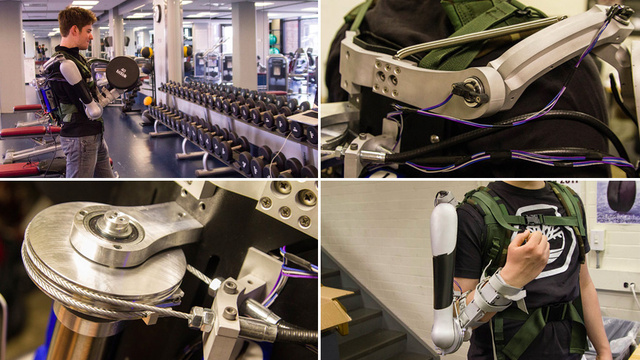Whether it’s a desire for superhuman strength, noble aspirations to help the mobility impaired, or a maniacal impulse to create an army of super soldiers to take over the world, people have long been captivated by the idea of engineering an exoskeleton. Although we have a ways to go before creating Matt Damon’s suit in Elysium, we’re one step closer thanks to a team from the University of Pennsylvania.


The TitanArm is an untethered, upper body exoskeleton designed and engineered by a group of students from the University of Pennsylvania. It recently has received a lot of attention after winning the silver medal in a Penn Engineering competition. Other exoskeleton systems exist, but are often bulky, expensive, and tethered to a power source. The student’s goal was to break free from the norm and create a practical device that was relatively inexpensive, light, and most important, wireless. The TitanArm consists of a light aluminum frame, battery-powered DC motor, a dual-cable drive system, racket braking and thumbstick controller, and a BeagleBone board monitoring the electronics. The students imagine the device could be a valuable tool for healthcare applications, such as increasing mobility or assisting physical therapists. It also contains several onboard sensors that monitor and measure the user’s motion, and could provide doctors with valuable data about a patient’s mobility. The TitanArm might also be employed as a lifting aid for physically demanding occupations, and possibly prevent some of the thousands of on-the-job accidents that happen each year.
TitanArm is currently only a prototype and has a way to go before it can be put to practical use. The first obvious limitation is that it currently only assists one arm. The second is that it’s controlled by a thumbstick rather than assisting the user’s movements. Also, it maxes out at 40 pounds. Although dreams of robotic-assisted superhuman strength are still unobtainable, most would agree that the TitanArm is a solid first step. It might be for the best, after watching the student’s youtube video (below) I feel like they might be the “world domination” type.

 Laptop & Tablet Parts
Laptop & Tablet Parts




















